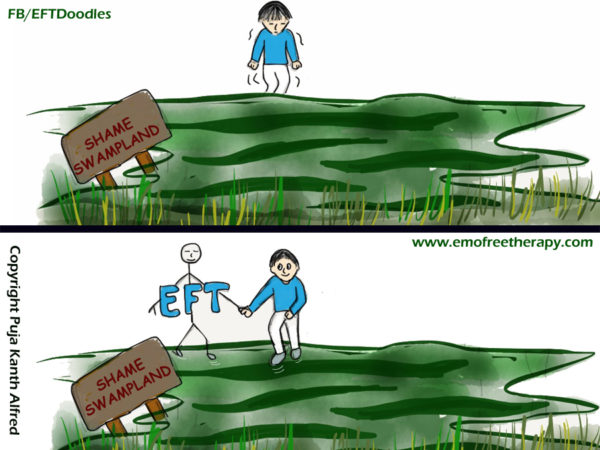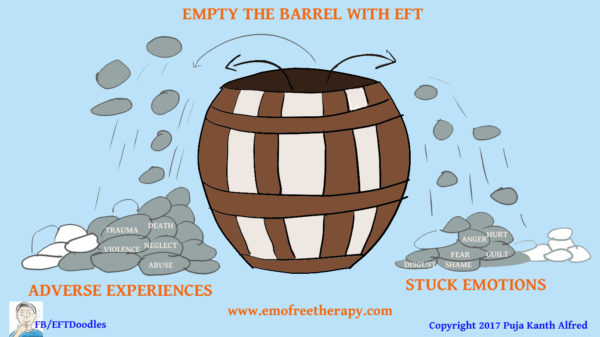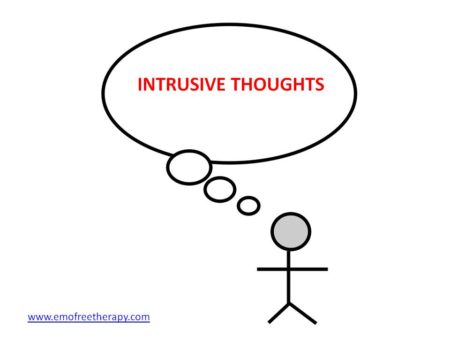“Owning our story and loving ourselves through that process is the bravest thing that we will ever do” Brene Brown
To tell the truth and own it, is the most liberating gift that you can give to yourself. When you share your healing journey, not only do you own your story but the story also gives hope to others to heal. And that’s exactly what this article is about.
I’m sharing a part of my personal journey to tell you that healing is possible – that recovery from childhood sexual abuse (CSA) is possible.
I was sexually abused from the age of 4- 5 to 11 by three different people, a house help and two relatives. I remember that the abuse started when I was nearly 4 years old. I have strong visceral memories of that time period – the unease, confusion, and disgust (I worked on them with EFT1 later)
I also remember writing on the wall of an old water tank in my home, “Puja is dead”, in my native language, when I was around 7-8 years old or maybe younger.
The clearest memories are those of the abuse by one of my relatives. We had a joint family and he was staying with us. That man always evoked a sense of unease with his presence. After a while, I avoided getting near him but was pulled into a web of secrecy and shame. He made me believe that I would be blamed if I divulged anything to my parents. It was so confusing as a kid because close relatives are supposed to be protective and not exploitative.
Children aren’t in an age where they can fully grasp what’s happening; they can’t give or deny consent because they don’t even know what consent is. When a child is touched inappropriately, forced upon, cornered, threatened and/or shamed to stay silent, it is too overwhelming for the child and often they dissociate to cope with it. This hinders the emotional and psychological development of the child.
For years, I struggled with social anxiety, fear of speaking in public, generalized anxiety, stomach issues and other physical manifestations of the suppressed emotions.
Now when I look back I feel a lot of compassion for my younger self and I know what a brave little girl she was to have gone through whatever she had to.
Facing the abuser
When I was 11 years old, I gathered the courage to stop the abuse. One day when my relative was forcing me against a wall, I shouted at him and threatened to expose him to his wife (he had just got married and had moved to a new house). And that’s when the abuse ended. This was the first step towards my healing journey. I refused to touch his feet after that (an Indian custom where you pay respect to a ‘respectable’ elder by touching his/her feet).
Healing begins
My memories of CSA started re-surfacing in my college years and since then I have been very vocal about spreading awareness about CSA.
In my college, I took up psychology and that helped tremendously in understanding what I was going through. I did my internship at RAHI in Delhi (a support group for survivors of CSA). The full impact of what had happened in my childhood – the powerlessness, helplessness, shame, guilt, disgust, pain and loss finally sunk in when I read stories by survivors of CSA. As children we often dissociate from the abuse to cope with what’s happening and the encoding of the trauma happens very differently than that of normal events. Usually the traumatic events are encoded as bodily sensations without many words and images attached to them. Hence the body carries the visceral memories of the abuse. The narrative isn’t linear but comes in bits and pieces. There were some events that were very clear in my head and there were some that were very fragmented. I remember flashes of some coercive abusive episodes.
I read a lot in my graduate years and used a lot of self-help techniques to handle social anxiety, tendency to self harm, anger/rage, insecurities, and fear. My thesis on Feminism further helped me to develop a stronger sense of self.
Disclosure and Facing the abuser again
After my post graduation, I decided to face my relative one last time. I disclosed everything to my parents and they were shocked and felt really guilty for not noticing what was happening. But they supported me unconditionally. I called the abuser, and gave him a piece of my mind over the phone. Of course, he tried to blame me and told my parents that I was being disrespectful and that I was the problem child etc. But my parents cut him off. They’ve always stood by me in all my decisions and have supported me throughout.
Emotional Freedom Techniques1
In 2003, I was introduced to EFT and that’s when the next healing phase began. I did intensive EFT sessions on myself for a year and processed most of the traumatic memories. It helped tremendously in reintegrating the disowned parts of myself and shedding the guilt and shame.
Then I started my private practise as a psychologist and EFT practitioner and worked with a lot of survivors of childhood sexual abuse.
I also swapped sessions with EFT practitioners to work on the remnants of traumatic memories and their effects.
(Added on Dec 2020) I continue to have sessions with EFT practitioners/mentors regularly as it’s very important to keep doing our inner work as therapists while we work with clients.
Krav Maga2
I learnt and practiced Krav Maga on and off for nearly 5-6 years. It helped tremendously in increasing my body confidence and dissolving the remaining unhealed trauma. I’ve been triggered several times during the Krav Maga classes but the triggers were eased and resolved with my trainer’s support and with the self-defence moves and techniques.
Owning your story
There is a stigma attached to speaking up and owning your story. I don’t buy this archaic mentality.
I was abused as a child and I have no shame in owning my story because the shame lies fully and squarely with the abusers.
I have gone from being a survivor to a thriving person and that’s why I can say that healing from trauma is possible.
Coming to terms with my abuse has made me stronger and more compassionate to people around me. Something like this should never happen to any child, but it is possible to move on and leave it behind and use that reservoir of resilience and tenacity to live your life the way you want. Finally, adverse circumstances can either harden you or soften you, as Dalai Lama says. And this has certainly softened me, made me more compassionate as a person.
If you’re a survivor, remember it’s not your fault; it’s not your shame to carry. Assign the shame and blame to the abuser(s) where it belongs and then leave it behind. Heal it, don’t carry it. It’s not yours to carry. You’re not damaged; you’re a whole person as worthy as anyone else.
Meaning of certain terms used in this article:
1 – EFT stands for Emotional Freedom Techniques, a mind-body tool to dissolve stress and trauma.
2- Krav Maga is an Israeli form of Martial Arts, a practical street smart self-defence system.















